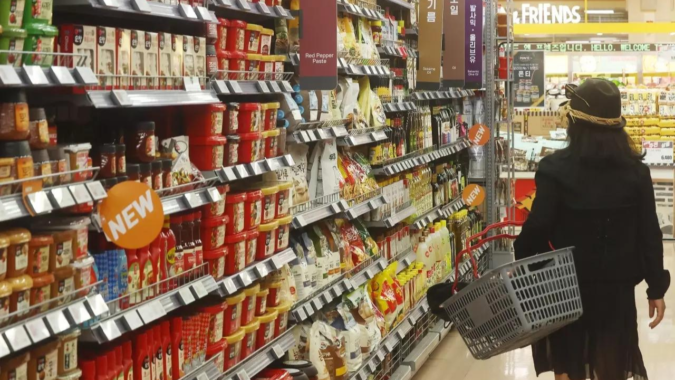WASHINGTON: Annual consumer inflation in the United States cooled in June to its lowest rate since early 2021, the Labor Department said Wednesday — an encouraging sign for policymakers battling to lower cost pressures.
The key inflation gauge, the consumer price index (CPI), rose 3.0 per cent from a year ago last month, down from 4.0 percent in May and slightly lower than analysts expected.
The US Federal Reserve has raised interest rates rapidly over the last year to ease demand and bring down price increases.
While Fed officials have signaled that further rate hikes are likely needed to bring inflation back to their two percent target, the June CPI report will heighten market doubts about the number of additional increases needed down the line.
Although “too many Fed officials have made it clear that they think further hikes are needed,” suggesting another increase this month, a good CPI report could change prospects of whether another rise in September is needed, Pantheon Macroeconomics said in a recent report.
June’s consumer inflation figure marks the lowest annual rate in more than two years.
In another positive sign, the monthly “core” rate — excluding the volatile food and energy components — came to its lowest reading since late 2021 at 0.2 percent.
While the index for shelter remained the “largest contributor” to the overall monthly increase and the index for car insurance also contributed, other areas saw declines including airfares and used vehicles, the Labor Department said.
Key parts of inflation that Fed Chair Jerome Powell have highlighted, including the core readings for goods and services, have “slowed to end the second quarter,” said Rubeela Farooqi, chief US economist at High Frequency Economics.
“While inflation remains elevated, the deceleration will be welcome news to policymakers,” she added in a note. “But these data are not likely to change the outcome of the July meeting, with a 25-basis points rate hike most likely.”
Meanwhile, “components like airline fares and hotel room rates soared over the winter but are no longer the problem, thanks to falling fuel prices and softening demand, at the margin,” the Pantheon Macroeconomics report added.
Instead, services inflation is being supported by rapid increases in vehicle insurance and auto repair costs, Pantheon analysts said.
In the latest Labor Department figures, the food index eased slightly in June while energy and rent edged up, offsetting declines in costs of used vehicles.
The key inflation gauge, the consumer price index (CPI), rose 3.0 per cent from a year ago last month, down from 4.0 percent in May and slightly lower than analysts expected.
The US Federal Reserve has raised interest rates rapidly over the last year to ease demand and bring down price increases.
While Fed officials have signaled that further rate hikes are likely needed to bring inflation back to their two percent target, the June CPI report will heighten market doubts about the number of additional increases needed down the line.
Although “too many Fed officials have made it clear that they think further hikes are needed,” suggesting another increase this month, a good CPI report could change prospects of whether another rise in September is needed, Pantheon Macroeconomics said in a recent report.
June’s consumer inflation figure marks the lowest annual rate in more than two years.
In another positive sign, the monthly “core” rate — excluding the volatile food and energy components — came to its lowest reading since late 2021 at 0.2 percent.
While the index for shelter remained the “largest contributor” to the overall monthly increase and the index for car insurance also contributed, other areas saw declines including airfares and used vehicles, the Labor Department said.
Key parts of inflation that Fed Chair Jerome Powell have highlighted, including the core readings for goods and services, have “slowed to end the second quarter,” said Rubeela Farooqi, chief US economist at High Frequency Economics.
“While inflation remains elevated, the deceleration will be welcome news to policymakers,” she added in a note. “But these data are not likely to change the outcome of the July meeting, with a 25-basis points rate hike most likely.”
Meanwhile, “components like airline fares and hotel room rates soared over the winter but are no longer the problem, thanks to falling fuel prices and softening demand, at the margin,” the Pantheon Macroeconomics report added.
Instead, services inflation is being supported by rapid increases in vehicle insurance and auto repair costs, Pantheon analysts said.
In the latest Labor Department figures, the food index eased slightly in June while energy and rent edged up, offsetting declines in costs of used vehicles.
